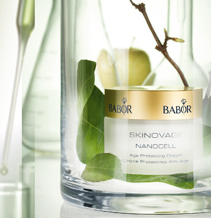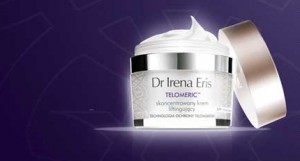Enjoy Avora’s unique Nanocell Age Protecting Facial with swiss apple stem cells for or a crisp youthful freshness! 
By: Christine Heathman
Posted: May 26, 2010, from the June 2010 issue of Skin Inc. Magazine.
Editor’s Note: This article is based on a presentation that will be presented by the author at Face & Body Northern California, July 17–19, 2010, at the San Jose McEnery Convention Center in San Jose, California.
“The development of cell lines that may produce almost every tissue of the human body is an unprecedented scientific breakthrough. It is not too unrealistic to say that this research has the potential to revolutionize the practice of medicine, and improve the quality and length of life.”
—Harold Varmus, Nobel Prize winner and former director, National Institutes of Health
Fighting the skin-aging clock now requires more understanding of ingredient science and the anatomy, histology and physiology of the skin. Research in skin biology began charting an interdisciplinary approach to the skin sciences several decades ago, but the demand for anti-aging ingredients has driven the need for the progressive age management of skin to an all-time high. A recent study conducted by an independent survey reports more than 62% of women between the ages of 35–54, and more than 65% of women 55 and older, affirm that aging is their reason for using skin care products.1
It is unavoidable: Skin ages.
The genetic answer to skin aging lies in the fact that each gene codes for a specific protein, and proteins determine how cells work. Proteins, such as collagen, provide bodily structure by connecting tissues and organs. In the case of skin, collagen acts as scaffolding holding up the skin, and keeping it smooth and wrinkle-free. Wrinkles are the benchmark of declining collagen levels and can affect all age groups when UV radiation assaults cells, breaking down DNA via the sun’s proton energy
The innate aging process is made worse via UV radiation, chemical compositions of tissue change, sun, pollution, heat, smoking, drugs, stress, diet and other environmental factors affecting the challenge of skin aging. Because of this, new revolutionary ingredients that combat chronological aging, reduce superficial and deep wrinkles, delay senescence of essential cells, and preserve the youthful appearance and vitality of skin have been discovered using the biotechnology of plant stem cell extracts. Plant stem cell extracts have been proven to protect skin from UV oxidative stress and inhibit inflammation; control UV-induced matrix metalloproteinase (MMP) activation, collagen loss and tissue damage; and combat destructive free radical injury that leads to photoaging.2
What are stem cells?



